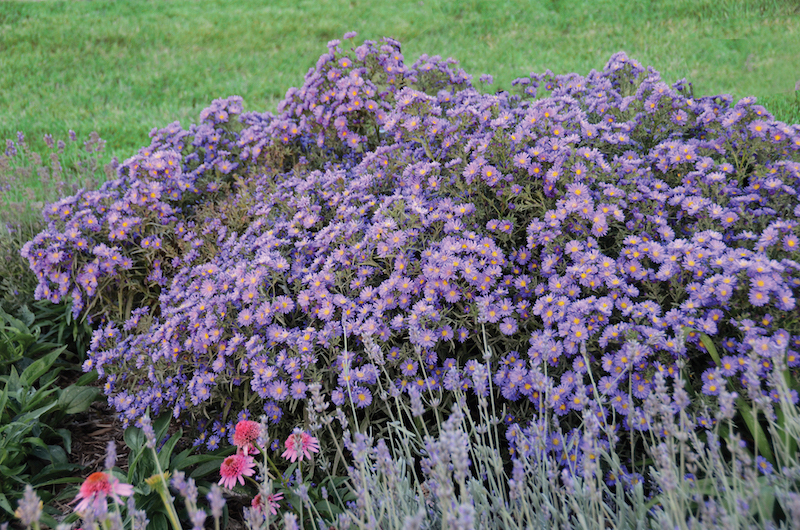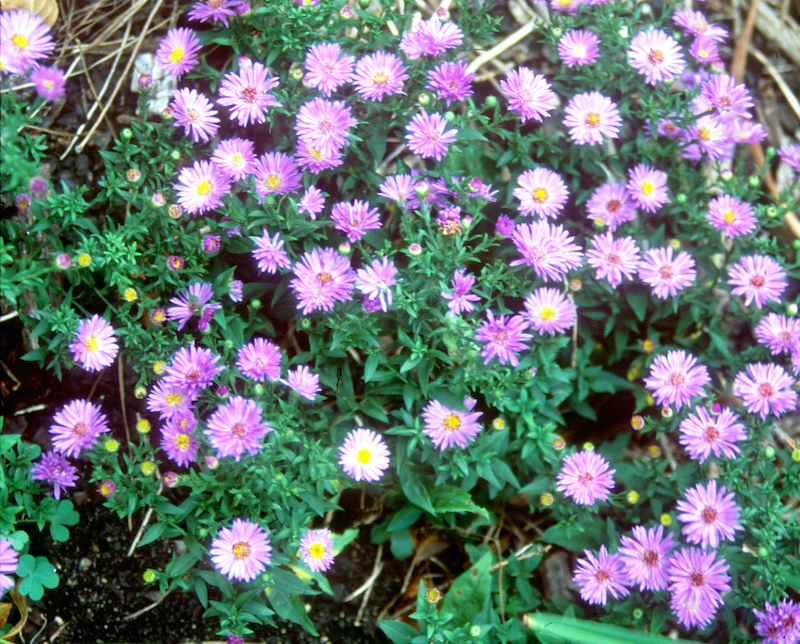Asters (Symphyotrichum spp.) are shallow rooted so getting them in the ground is relatively easy. Dig a hole roughly the same size as the pot. Compost, decomposed cow manure, and peat moss may be added at time of planting but asters are pretty forgiving when it comes to soil. These plants adapt to a range of soil types as long as they are not planted in wet areas.

What You Need To Plant Asters
Gather a good shovel, mulch, and maybe a small garden trowel to plant asters. Choose a bright, sunny location with at least 6 hours of direct light and access to a water source.
Where to Plant Asters
Asters prefer full sun to reach their maximum potential and do best planted in an area with well-drained soil that is slightly acidic. They are shallow rooted so they should not be planted too deeply, 4 to 6 inches at most.

Aster Spacing
Depending on the variety, asters should be planted 1 to 4 feet apart as some varieties will spread by way of underground rhizomes. They may be planted individually or in groups of 3 to 5, depending on the gardener’s planting layout. A single aster plant can eventually form a clump that is 2 to 3 feet wide. Asters are strong-stemmed woody perennials that rarely require staking and should be planted at least 2 to 3 feet away from any structure or other perennials to allow them ample room to spread and not overcrowd the area.
Steps To Plant Asters
Once you have located a planting site in full sun, follow the steps below to plant your aster. You can add a topdressing of organic compost around the root zone to conserve moisture and improve soil texture.
Step 1 - Excavate a hole roughly the same size of pot.
Step 2 - Loosen the soil around the edges of the hole.
Step 3 - Incorporate compost into existing soil if desired.
Step 4 - Remove aster from pot and loosen the roots around the rootball. Clip any circling roots. Place aster in hole, keeping the top of the rootball even with the soil line.
Step 5 - Backfill the hole with native soil.
Step 6 - Water well, filling in air gaps around the roots.
When to Plant Asters
Asters are best planted in early spring or fall when the weather is cool and rainy. Asters may be planted at any time of day, but planting in the heat of the day should be avoided. If planting asters on a hot summer day, water well and avoid adding any commercial fertilizer to the planting medium as this may potentially burn the plant's roots and kill the plant. Water well after planting.
Transplanting Asters
Asters are easily divided as they are shallow rooted and can be transplanted with minimal effort. Plants may be divided using a shovel or garden trowel. They are best transplanted in early spring to allow them ample time to adjust to their new growing space and develop new roots before the heat of the summer. Water well after transplanting.
 |
Author Chris Link - Published 08-02-2022 |
